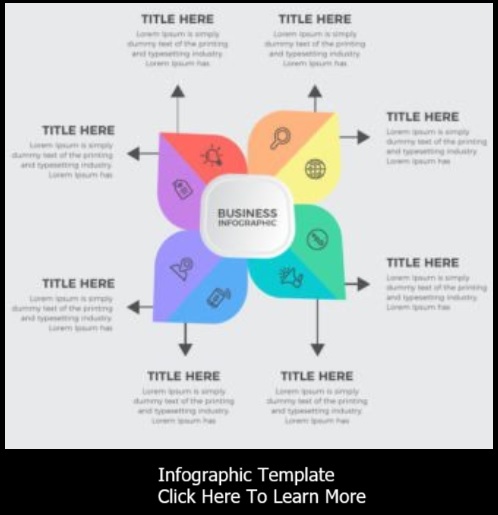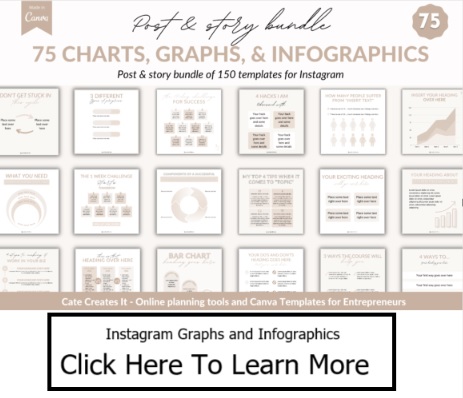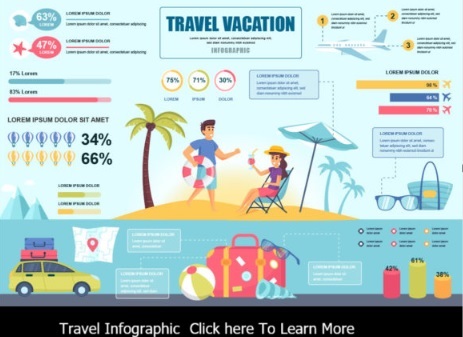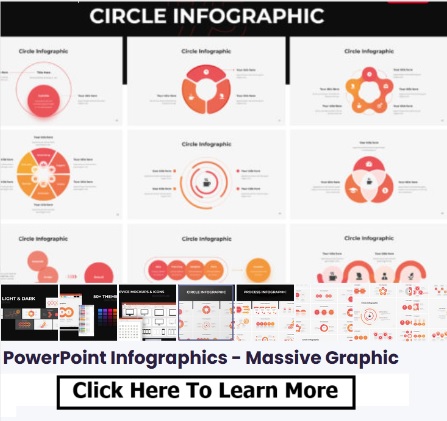Decoding Visual Communication: Infographic vs. Poster
In the realm of visual communication, both infographics and posters hold significant roles in conveying information, ideas, and messages. While they share similarities, they serve distinct purposes and cater to different communication needs. Let's delve into the differences between infographics and posters to understand their unique attributes and applications.
Defining Infographics: Visualizing Complexity
Infographics are a dynamic blend of visuals and text designed to present complex information in a concise and visually appealing manner. They are crafted to distill data, statistics, concepts, or processes into easily digestible visuals. Infographics excel at breaking down intricate subjects, making them accessible to a broader audience. Their primary goal is to educate, inform, and elucidate. Infographics often involve charts, graphs, icons, and illustrations that help simplify data and emphasize key points. They are commonly found in articles, presentations, reports, and educational materials, where the focus is on delivering insights quickly and effectively.
Characteristics of Infographics:
- Data-driven content presentation.
- Emphasis on clarity, brevity, and engagement.
- Visual representations of complex information.
- Designed to explain, inform, and educate.
- Utilizes a combination of visuals and succinct text.
- Often uses data visualization techniques.
Defining Posters: Captivating Attention
Posters are visual displays aimed at capturing attention, often for promotional or illustrative purposes. They typically feature a central image or illustration accompanied by text to convey a specific message. Posters are commonly used for advertising events, raising awareness, promoting products, or conveying an artistic or cultural message. Unlike infographics, which are data-centric, posters are more expressive and may evoke emotions or a particular mood. While they can contain information, their primary purpose is to grab the viewer's attention and communicate a message through impactful design and visuals.
Characteristics of Posters:
- Visual appeal and attention-grabbing design.
- Conveys a specific message or idea.
- Often used for advertising, events, or artistic expression.
- May include less text compared to infographics.
- Focuses on creating an emotional or aesthetic impact.
- Design elements prioritize aesthetics over data presentation.
Key Distinctions:
-
Purpose and Function:
- Infographics: Information dissemination, data visualization, and education.
- Posters: Promotion, advertisement, artistic expression, and message conveyance.
-
Content Emphasis:
- Infographics: Data, statistics, processes, concepts.
- Posters: Eye-catching visuals, central message, emotions.
-
Amount of Text:
- Infographics: Often includes concise, explanatory text.
- Posters: Text is used sparingly to enhance visual impact.
-
Audience Engagement:
- Infographics: Engages intellectually through informative content.
- Posters: Engages emotionally or aesthetically to evoke a response.
-
Information Depth:
- Infographics: Provides in-depth insights on a topic.
- Posters: Offers a snapshot or brief overview.
In conclusion, while infographics and posters both leverage visual elements to communicate, their primary objectives, content emphasis, and audience engagement differ. Infographics dive deep into data visualization and information presentation, while posters captivate attention through visual aesthetics and succinct messaging. Understanding the distinctions between these two forms of visual communication allows creators to choose the appropriate medium to effectively convey their intended message.
The Art of Visual Storytelling: Unveiling the 5 Key Elements of Infographics
In today's fast-paced digital landscape, the ability to convey complex information quickly and effectively is paramount. Enter infographics - a dynamic fusion of design and information that transcends language barriers and captures attention. Behind every impactful infographic lies a carefully crafted blend of elements that work in harmony to tell a compelling visual story. Let's dive into the five key elements that make up an infographic's DNA.
1. Visuals: Painting a Thousand Words
At the heart of every infographic are visuals that communicate concepts, data, and ideas at a glance. Visual elements encompass a range of components, from icons and illustrations to images and charts. Well-chosen visuals not only enhance aesthetics but also serve as vehicles to convey information concisely and engage the audience emotionally. Icons can symbolize concepts, images can provide context, and charts can distill complex data into digestible insights.
2. Text: Guiding the Narrative
Textual content in an infographic plays a crucial role in guiding the viewer's understanding. This includes headings, subheadings, labels, captions, and explanatory text. Text should be concise, clear, and organized hierarchically to direct the reader's attention and guide them through the visual story. Effective use of typography enhances readability and reinforces the overall design aesthetic.
3. Layout: Structuring for Impact
The layout of an infographic determines how its various elements are arranged and interact. A well-designed layout ensures that information flows logically and intuitively, preventing visual clutter. It should guide the reader's eye from one element to another in a structured manner. Proper spacing, alignment, and balance contribute to a visually pleasing experience, enhancing the infographic's effectiveness.
4. Color: Conveying Emotion and Meaning
Color is a powerful tool that evokes emotions, establishes brand identity, and aids in information hierarchy. The strategic use of color enhances visual appeal and guides readers through the content. A consistent color scheme maintains cohesiveness, while contrasting colors draw attention to key points. Color coding can also be employed to group related information or data.
5. Data Visualization: Unveiling Insights
Infographics often involve presenting data, and data visualization is the art of transforming raw numbers into meaningful insights. Charts, graphs, and diagrams are fundamental data visualization tools that help readers understand trends, comparisons, and relationships. The choice of visualization type depends on the nature of the data and the story you're trying to convey.
By harmoniously combining these five elements, infographics become compelling vehicles for information delivery. The effectiveness of an infographic lies in its ability to distill complex ideas, stimulate visual engagement, and facilitate quick comprehension. Whether you're conveying scientific research, explaining a process, or sharing statistics, mastering the art of infographics empowers you to communicate with impact in a world where attention spans are fleeting.
Incorporating visuals, text, layout, color, and data visualization effectively transforms a mere image into an engaging and informative visual story that resonates with audiences and leaves a lasting impression.
- A Guide to Different Types of Infographics
- Cooking Up Visual Delights: The Role of Infographics in Cookbooks
- Decoding Visual Communication: Infographic vs. Poster
- Five Types Of Infographic Articles
- Infographics in Press Releases: Communicating Complexity with Clarity
- The Art of Visual Storytelling: Unveiling the 5 Key Elements of Infographics
- The Power of Infographics: Enhancing Articles with Visual Storytelling
- Transforming Content: 7 Engaging Types Perfect for Infographics
- Visual Persuasion: Leveraging Infographics in Sales Brochures as a Powerful Marketing Tool
- Visual Powerhouse: Harnessing the Impact of Infographics in Presentations
A Guide to Different Types of Infographics
1. Statistical Infographics: Making Numbers Speak
Statistical infographics are perhaps the most common type. They transform raw data and statistics into visually compelling charts, graphs, and diagrams. Bar graphs, pie charts, line charts, and scatter plots are all examples of statistical infographics. These visuals help illustrate trends, patterns, and relationships in data, making it accessible to a wider audience.
2. Informational Infographics: Breaking Down Concepts
When complex concepts need simplification, informational infographics step in. These infographics use a combination of text and visuals to break down intricate subjects into easy-to-understand bits. They're often used in educational contexts, explaining scientific processes, historical events, or technological advancements.
3. Timeline Infographics: Tracing Events Through Time
Timeline infographics are perfect for depicting historical events, project milestones, or any sequence of events over time. They present a linear representation of events, helping readers understand the chronology and context of important occurrences. From ancient history to modern advancements, timeline infographics are a visual journey through time.
4. Process Infographics: Guiding Step-by-Step
Process infographics provide a visual guide to completing a series of steps or tasks. These infographics are often used in how-to articles and tutorials. Whether it's a recipe, DIY project, or technical instructions, process infographics break down each step visually, aiding comprehension and implementation.
5. Comparison Infographics: Weighing Options
When you need to compare different options, products, or concepts, comparison infographics come to the rescue. These infographics highlight the strengths and weaknesses of each option, aiding decision-making. They often feature side-by-side comparisons and pros-and-cons lists.
6. Geographic Infographics: Mapping Information
Geographic infographics use maps and geographical data to convey information related to locations, populations, or trends across regions. They're particularly useful for illustrating demographic data, environmental changes, and geopolitical insights.
7. Hierarchical Infographics: Showing Structures
Hierarchical infographics visualize relationships within a hierarchy or structure. They're often used to present organizational charts, family trees, or classification systems. These visuals help readers understand the levels of authority, relationships, and connections between different entities.
8. Flowchart Infographics: Navigating Options
Flowchart infographics provide a decision-making framework by presenting a series of choices and outcomes. They're interactive in nature, leading readers through a series of decisions and responses, ultimately guiding them to a conclusion. Flowchart infographics are valuable for explaining processes with multiple possible paths.
9. Narrative Infographics: Telling a Story
Narrative infographics combine visuals and text to create a storytelling experience. They're used to convey a sequence of events, a cause-and-effect relationship, or a narrative arc. Narrative infographics engage readers by guiding them through a structured story, making them ideal for historical accounts and case studies.
10. Statistical Maps: Visualizing Data Spatially
Statistical maps use geographical representations to illustrate data variations across regions. Heat maps, choropleth maps, and dot distribution maps are examples of statistical maps. They help reveal spatial patterns and trends in data, making them useful for illustrating geographic trends.
In a world where information is abundant, infographics serve as valuable tools for simplifying and enhancing communication. By choosing the appropriate type of infographic for your content, you can effectively engage your audience and convey your message in a visually compelling and memorable manner.
- A Guide to Different Types of Infographics
- Cooking Up Visual Delights: The Role of Infographics in Cookbooks
- Decoding Visual Communication: Infographic vs. Poster
- Five Types Of Infographic Articles
- Infographics in Press Releases: Communicating Complexity with Clarity
- The Art of Visual Storytelling: Unveiling the 5 Key Elements of Infographics
- The Power of Infographics: Enhancing Articles with Visual Storytelling
- Transforming Content: 7 Engaging Types Perfect for Infographics
- Visual Persuasion: Leveraging Infographics in Sales Brochures as a Powerful Marketing Tool
- Visual Powerhouse: Harnessing the Impact of Infographics in Presentations
Five Types Of Infographic Articles
1. Data-Driven Reports: Visualizing Complex Data
Articles that involve presenting extensive data, statistics, or research findings can become overwhelming for readers. Infographics are the perfect solution to simplify complex data sets and make them more accessible. Whether you're reporting on market trends, scientific research, or survey results, infographics can distill intricate information into clear, visual representations like charts, graphs, and diagrams.
Example: "Exploring Global Climate Change: A Visual Guide to Temperature Trends Over the Last Century"
2. How-To Guides: Visualizing Step-by-Step Processes
When explaining step-by-step processes or providing tutorials, infographics enhance the reader's understanding by breaking down each stage visually. The combination of text and visuals helps readers follow instructions more easily, reducing the chances of confusion. From assembling furniture to cooking a recipe, infographics can guide readers through tasks with clarity.
Example: "Mastering the Art of Sushi: A Step-by-Step Infographic Guide"
3. Comparative Analysis: Highlighting Differences and Similarities
Articles that involve comparing different products, services, concepts, or options can benefit from infographics that visually lay out the pros and cons. Comparative infographics enable readers to quickly assess the key differences and similarities, aiding them in making informed decisions.
Example: "Choosing the Ideal Smartphone: A Visual Comparison of Features and Performance"
4. Historical Timelines: Tracing Events Through Time
Narratives that span across historical timelines can be better understood with infographics. Visual timelines allow readers to grasp the sequence of events, their chronological order, and their significance. Whether discussing the evolution of technology or the development of a political movement, timelines bring history to life.
Example: "The Space Race: A Visual Timeline of Key Milestones from 1957 to 1972"
5. Visualized Statistics: Making Statistics Relevant and Engaging
Statistics often play a significant role in articles, but they can be dry and uninteresting without proper presentation. Infographics transform raw numbers into engaging visuals, providing context and meaning to the statistics. This approach encourages readers to engage with the data and draw conclusions more easily.
Example: "Obesity Epidemic: Visualizing Alarming Statistics and Health Implications"
Incorporating infographics into these types of articles not only enhances their visual appeal but also improves reader engagement and understanding. Infographics are a versatile tool that can be tailored to suit various subjects, making them a valuable asset for content creators aiming to communicate complex information effectively.
- A Guide to Different Types of Infographics
- Cooking Up Visual Delights: The Role of Infographics in Cookbooks
- Decoding Visual Communication: Infographic vs. Poster
- Five Types Of Infographic Articles
- Infographics in Press Releases: Communicating Complexity with Clarity
- The Art of Visual Storytelling: Unveiling the 5 Key Elements of Infographics
- The Power of Infographics: Enhancing Articles with Visual Storytelling
- Transforming Content: 7 Engaging Types Perfect for Infographics
- Visual Persuasion: Leveraging Infographics in Sales Brochures as a Powerful Marketing Tool
- Visual Powerhouse: Harnessing the Impact of Infographics in Presentations
The Power of Infographics: Enhancing Articles with Visual Storytelling
In the age of information overload, grabbing and retaining readers' attention has become a significant challenge for content creators. With countless articles, blog posts, and reports being published daily, it's crucial to find innovative ways to communicate ideas effectively. One such powerful tool in the content creator's arsenal is the infographic. Infographics, with their unique blend of visual appeal and informative content, have proven to be a game-changer for enhancing articles and engaging readers. Let's explore why people should incorporate infographics into their articles.
1. Visual Appeal Captivates Audiences: Humans are inherently visual creatures. Our brains process visual information much faster than text. Infographics leverage this preference by presenting complex data and concepts in a visually pleasing manner. Bold colors, attractive icons, and creative layouts draw readers in, increasing the chances that they will read and engage with the content. A well-designed infographic can make even the most daunting data seem approachable and easy to understand.
2. Simplification of Complex Information: Articles often deal with intricate data, statistics, and concepts that might be challenging for readers to grasp immediately. Infographics simplify complex information by breaking it down into digestible chunks. By condensing key points and using visual elements to illustrate relationships, infographics make it easier for readers to comprehend the main takeaways without getting lost in a sea of text.
3. Enhancing Retention and Comprehension: Numerous studies have shown that combining text with visuals significantly enhances information retention and comprehension. When readers encounter a relevant image or graphic alongside textual content, it aids in memory recall and reinforces the message. This is particularly important for articles that aim to educate or persuade readers, as infographics provide a multi-sensory experience that helps information stick.
4. Quick Conveyance of Information: In today's fast-paced world, readers often skim through articles to find the information they need. Infographics excel in delivering information rapidly. By presenting key points in a concise manner, infographics cater to readers who are short on time or attention. This quick conveyance of information ensures that readers leave with the most important details even if they don't read the entire article.
5. Shareability and Virality: In the age of social media, shareability is a crucial aspect of content creation. Infographics are highly shareable due to their visual nature. Readers are more likely to share an informative and visually appealing infographic with their peers, thereby increasing the reach of your content. The potential for virality is significantly higher with infographics compared to text-only articles.
6. Cross-platform Compatibility: Infographics are versatile assets that can be used across various platforms. Whether it's in a blog post, social media update, presentation, or even printed material, infographics maintain their effectiveness. This adaptability ensures that your content remains consistent and impactful, regardless of where it's being consumed.
7. Telling a Story: Infographics are not limited to presenting data; they can also tell a story. By carefully arranging visuals and text, infographics can guide readers through a narrative, leading them from the introduction to the conclusion of your article's main points. This narrative structure keeps readers engaged and encourages them to follow the logical flow of your content.
Incorporating infographics into articles isn't just a design choice; it's a strategic decision that can significantly enhance the overall impact of your content. By capitalizing on humans' visual nature and the need for simplicity, infographics transform complex data into easily understandable and memorable visuals. Whether you're a marketer, educator, journalist, or any other type of content creator, infographics offer a dynamic and engaging way to convey your message to the world. So, the next time you sit down to craft an article, consider how infographics could be the key to unlocking a more compelling and effective communication tool.
- A Guide to Different Types of Infographics
- Cooking Up Visual Delights: The Role of Infographics in Cookbooks
- Decoding Visual Communication: Infographic vs. Poster
- Five Types Of Infographic Articles
- Infographics in Press Releases: Communicating Complexity with Clarity
- The Art of Visual Storytelling: Unveiling the 5 Key Elements of Infographics
- The Power of Infographics: Enhancing Articles with Visual Storytelling
- Transforming Content: 7 Engaging Types Perfect for Infographics
- Visual Persuasion: Leveraging Infographics in Sales Brochures as a Powerful Marketing Tool
- Visual Powerhouse: Harnessing the Impact of Infographics in Presentations




